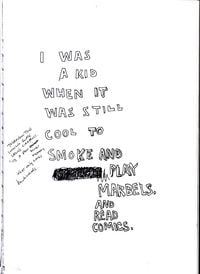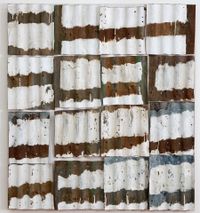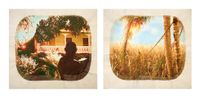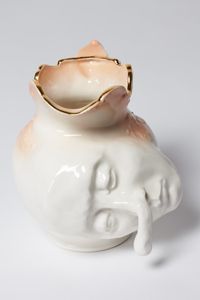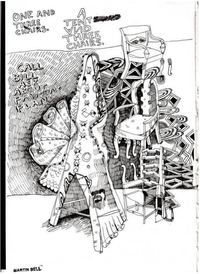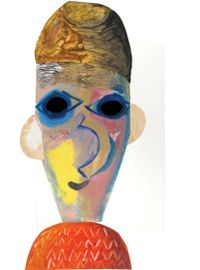Dr. Terry Wu
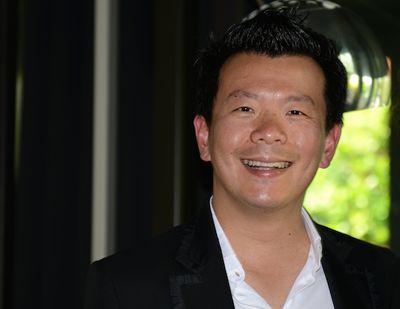
An ambassador to Melbourne Art Fair (MAF), Board Director of Heide Museum of Modern Art, and recognised supporter of institutions and events including the Biennale of Sydney and the new Australian Pavilion for Venice Biennale, Terry Wu reflects a breed of collector whose passion for art extends beyond the acquisition of artworks. Wu caught up with Anna Dickie just prior to the opening of MAF to discuss how he came to have the confidence to collect, his acquisition process, but also how his interest in art has extended to being more widely concerned with supporting the artistic community by other means too. He also discusses recent acquisitions, the artist space he is developing, emerging artists on his watch list, and his top tips for Melbourne Art Fair.
How did you first come to be interested in art?
My father is an artist and was for a long time an editor of the major newspaper in Taiwan. I grew up within a creative milieu – we visited galleries and were surrounded by people from the artworld. You can say art has always been in my blood and upbringing.
When did you start collecting?
I became confident in acquiring artworks around 2008. The first works gave me the freedom to actively engage myself in the contemporary art world and I have not looked back.
It is interesting you refer to a type of confidence being necessary before you started to collect art.
Yes, I suppose with anything I do, I undertake a lot of research first. I want to understand the language of art and be cognizant of why I like a particular work or practice. It was about developing an aesthetic taste that resonated with me.
So what is the advice you would give to new collectors?
Speak to the gallerist and ask lots of questions about the artist’s practice. Meet the artist at openings and start a conversation. If possible, organize studio visits. Although I use the term “research” to describe this approach, it is actually immensely stimulating and enjoyable to get to know the artist and the oeuvre. By being actively engaged, the collector embarks on a journey with the artist as the practice progresses and is more than just a buyer of artworks.
What was the first artwork you bought?
The first significant work was “untitled 1987” by Peter Booth. It is a big maniacal painting of an apocalyptical seascape with giant creatures and thick painterly strokes of colours. It was typical of Booth’s oeuvre in that seminal period and made me ponder the impact of humanity in nature. I have since gifted the work to Heide Museum of Modern Art as it complemented the significant Booth collection that Heide has.
How would you describe how your interest in art has changed since you started collecting?
Although I have caught the infectious disease of “collectomania”, I am trying to reconcile whether I need the artworks in my collection to appreciate them. I have developed a yearning to support the conversation of art and its practice. I am stimulated by the intellectual recourse of art as well as the physicality of artworks. Certainly I acquire works but my interest in art has extended to efforts to materially contribute to the arts community. Last year, Sam Jinks was invited to participate in Personal Structures: Time, Space, Existence a collateral event of the 55th Venice Biennale held at the Palazzo Bembo. I was very excited to be able to assist and to attend the show in person. More recently, we have fitted out 12 artist studios of various sizes in Brunswick East to provide quality affordable spaces for visual artists because many studios have become prohibitively expensive. We want there to be affordable spaces for artists within inner city Melbourne.
What type of art are you drawn to now?
I am drawn to art with a concern for the dilemmas of the human condition and the struggle for identity. The trauma of migrating in mid-teenage years and my current responsibilities as a reconstructive and aesthetic plastic surgeon gravitate me towards works which explore metamorphosis and belonging. Figurative works feature strongly in my collection. Paintings, photographs and works on paper form the foundation that is complemented increasingly more by three dimensional works and videos. The Hanging Man, 2006, a life-like sculpture by Sam Jinks, Untitled, 2001, an aluminium head on a plinth by Mike Parr, Night Falls as Night Watches, 2014, an installation by Sarah Contos and Mnemonic Pulse, 2014, an animated video by Jess Johnson were some of the latest additions to the collection.
You are a surgeon, so how do you find the time to research and view art?
Being a surgeon means I need to be well-organised and efficient with my time. I set aside time to research and view art as part of my overall schedule. However, the task is helped immeasurably by the internet as high resolution images can sometimes be almost as good as seeing the works in person. Websites, such as Ocula, which focus on contemporary art also provide invaluable information and excellent ideas for further research. In addition, Biennales such as Venice Biennale and Sydney Biennale and journals such as Artforum, Art Review and Frieze keep me abreast of the latest developments in the international art world.
Do you view the role of ‘collector’ as having attached to it certain responsibilities?
I see myself as a custodian of the artworks in my collection and would like the works to be seen by as broad an audience as possible. Collectors have the responsibility of sharing the works with the wider community, I believe, and this ethos is increasingly more embraced in Australia. I try to contribute by lending artworks to shows when requested and donating significant works when appropriate. But more importantly, I would like to support artists and the artistic community through the act of acquiring and collecting artworks. Whilst it is just one of the many ways to ensure the health of the visual arts, it is the most direct way to make sure artists will have the funds to pursue that next project.
In the last five years and in the context of Australia, what do you see as a major change in the art scene?
The emergence of galleries without brick-and-mortar spaces. Increasing participation of Australian galleries at international art fairs such as Art Basel Hong Kong. Increasing number of Australian collectors acquiring works by international artists. The advent of internet as a search tool for art.
It seems to me there is very much a perception that interest in global art comes at the expense of local art. Do you agree?
That perception may be true for collectors who desire to acquire the hottest artists in the world. Fortunately, there are still many collectors who are interested in supporting local artists and the Australian arts community. Personally, whilst I have a very keen interest in the global art scene, Australian art retains my focus.
Art today is really global and Australian art is firmly an integral part of that wonderful conversation. This “globalization” of art is evident in both the commercial art scene as well as institutions. It is manifest in art journals and art fairs and most importantly in the many discussions that take place at all layers of the arts community from universities to biennales.
In 2008, you selected works for an exhibition at Monash Gallery of Art entitled The Truth of the Matter. Tell me about that exhibition, and why and how you selected the works that were included in it?
This selection of photographs sought to explore the issue of stereotyping that is so prevalent in today’s society. The images question our preconceived ideas of beauty, innocence, power, gender, culture and how we relate to each other. Through the language of photography, the exhibition encouraged us to look at ourselves through an objective lens and challenged us to understand who we are. The artists in the show included Bill Henson, Julie Rrap, Anne Zahalka, David Rosetzky, Chantal Faust, Petrina Hicks, Matthew Sleeth and Simon Terrill.
Who do you think are some of the most interesting emerging Australian artists at the moment?
Laith McGregor
Nell
Sarah Contos
Sam Jinks
David Griggs
Jess Johnson
Which more established artists are you in awe of?
Patricia Piccinini
Del Kathryn Barton
Mike Parr
Rosemary Laing
Brook Andrew
Callum Morton
Belinde de Bruyckere
Ai Weiwei
Ron Mueck
Hernan Bas
Cindy Sherman
Urs Fisher
What are you most looking forward to in relation to the Melbourne Art Fair?
The Vernissage and artists’ party.
The artworks and the chance to meet new artists.
The many collectors’ tours and talks.
The TarraWarra Biennial.
From a collector’s perspective – how do you approach an art fair?
I would like to say that I always stick to my plans as there are frequently so many events on. Alas, I almost always forget the time when I talk to artists and curators. Fortunately, I often manage to have previews of the works on show and that research allows me to have some initial focus. But the most exciting part of attending an art fair is to discover new artists and works which simply capture my attention when I walk around the fair.
For people visiting Melbourne for MAF, what do you suggest they do when not at the Fair?
Come to visit Heide!! Mirka’s show is wonderful and the Gunter Christmann survey just opened.
Enjoy the city’s many bars & dining establishments. The European, Stokehouse City, Tonka and Madame Brussels come immediately to mind. —[O]



